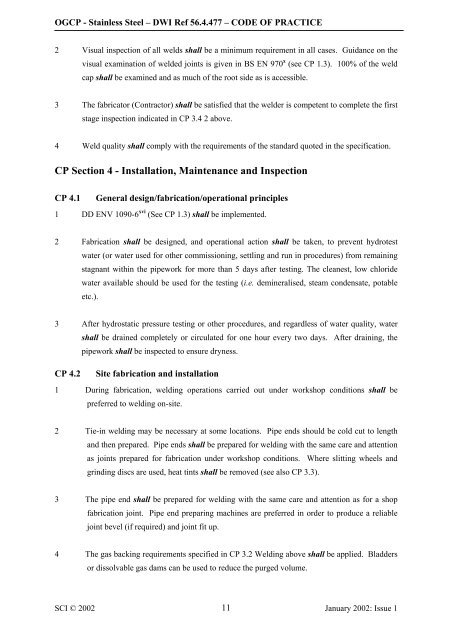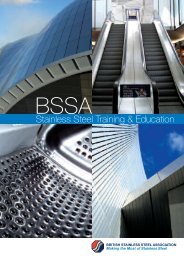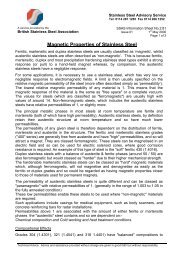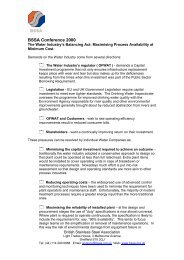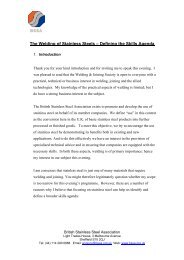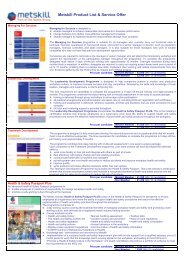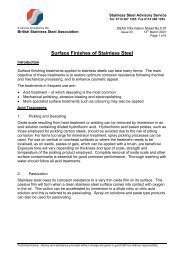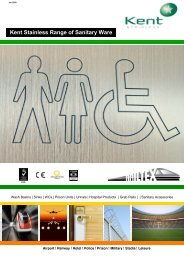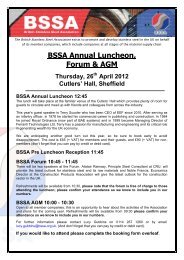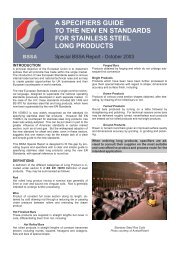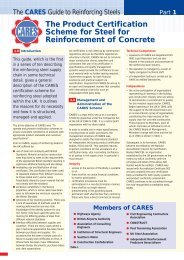Operational guidelines and code of practice for stainless steel
Operational guidelines and code of practice for stainless steel
Operational guidelines and code of practice for stainless steel
You also want an ePaper? Increase the reach of your titles
YUMPU automatically turns print PDFs into web optimized ePapers that Google loves.
OGCP - Stainless Steel – DWI Ref 56.4.477 – CODE OF PRACTICE<br />
2 Visual inspection <strong>of</strong> all welds shall be a minimum requirement in all cases. Guidance on the<br />
visual examination <strong>of</strong> welded joints is given in BS EN 970 x (see CP 1.3). 100% <strong>of</strong> the weld<br />
cap shall be examined <strong>and</strong> as much <strong>of</strong> the root side as is accessible.<br />
3 The fabricator (Contractor) shall be satisfied that the welder is competent to complete the first<br />
stage inspection indicated in CP 3.4 2 above.<br />
4 Weld quality shall comply with the requirements <strong>of</strong> the st<strong>and</strong>ard quoted in the specification.<br />
CP Section 4 - Installation, Maintenance <strong>and</strong> Inspection<br />
CP 4.1<br />
General design/fabrication/operational principles<br />
1 DD ENV 1090-6 xvi (See CP 1.3) shall be implemented.<br />
2 Fabrication shall be designed, <strong>and</strong> operational action shall be taken, to prevent hydrotest<br />
water (or water used <strong>for</strong> other commissioning, settling <strong>and</strong> run in procedures) from remaining<br />
stagnant within the pipework <strong>for</strong> more than 5 days after testing. The cleanest, low chloride<br />
water available should be used <strong>for</strong> the testing (i.e. demineralised, steam condensate, potable<br />
etc.).<br />
3 After hydrostatic pressure testing or other procedures, <strong>and</strong> regardless <strong>of</strong> water quality, water<br />
shall be drained completely or circulated <strong>for</strong> one hour every two days. After draining, the<br />
pipework shall be inspected to ensure dryness.<br />
CP 4.2 Site fabrication <strong>and</strong> installation<br />
1 During fabrication, welding operations carried out under workshop conditions shall be<br />
preferred to welding on-site.<br />
2 Tie-in welding may be necessary at some locations. Pipe ends should be cold cut to length<br />
<strong>and</strong> then prepared. Pipe ends shall be prepared <strong>for</strong> welding with the same care <strong>and</strong> attention<br />
as joints prepared <strong>for</strong> fabrication under workshop conditions. Where slitting wheels <strong>and</strong><br />
grinding discs are used, heat tints shall be removed (see also CP 3.3).<br />
3 The pipe end shall be prepared <strong>for</strong> welding with the same care <strong>and</strong> attention as <strong>for</strong> a shop<br />
fabrication joint. Pipe end preparing machines are preferred in order to produce a reliable<br />
joint bevel (if required) <strong>and</strong> joint fit up.<br />
4 The gas backing requirements specified in CP 3.2 Welding above shall be applied. Bladders<br />
or dissolvable gas dams can be used to reduce the purged volume.<br />
SCI © 2002 11<br />
January 2002: Issue 1


